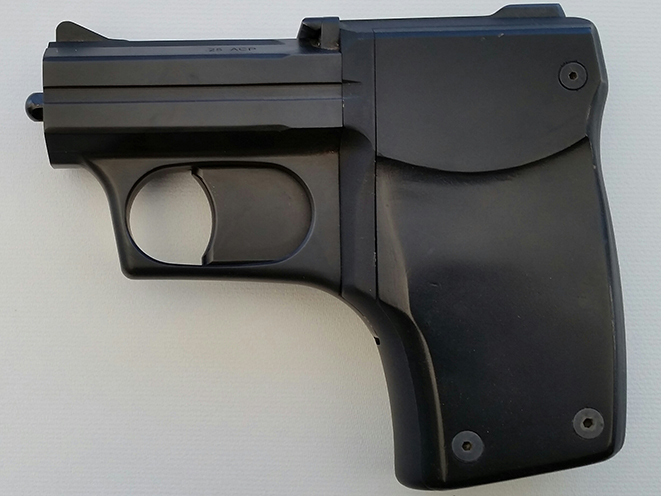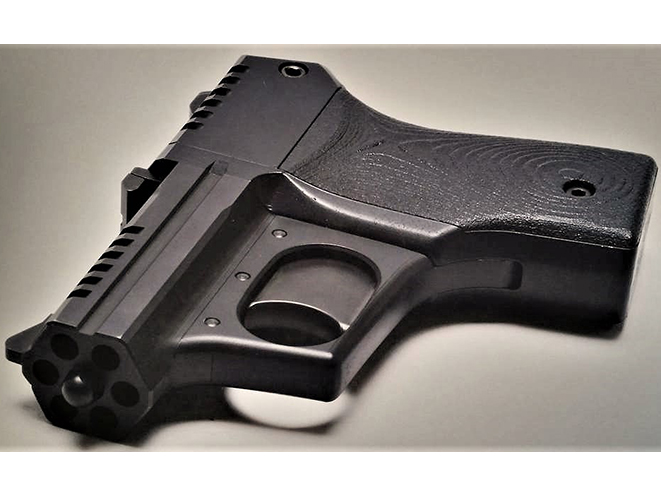These days, a lot of “Keyboard Kommandos” refer to smaller handguns, sometimes anything less than .45 caliber, as “mouse guns,” and those cartridges especially targeted for this derision are some real antiques. More specifically, I’m referring to the .25 ACP and .32 ACP, which both came from the inventive mind of John Moses Browning.
Even at the dawn of the 20th century, Browning had his fingers on the pulse of the gun market and saw what was popular with the public: small handguns for self-defense. Browning invented the .32 ACP (aka the 7.65mm Browning Short) in 1899 and followed up with the Browning Model 1900 pistol made by FN in Belgium. It had a straight-walled case and was semi-rimmed, firing a 73-grain FMJ bullet at around 905 fps. Colt adopted another Browning design and produced the Model 1903 Pocket Hammerless pistol, which jostled other gun manufacturers and led to the Savage Model 1907, the Browning Model 1910, Walther’s PPK and dozens of others.
In 1905, Browning came up with the .25 ACP (6.35x16mm), and FN made the Model 1905 pistol, or “Baby Browning,” to shoot it. This tiny cartridge, with its 50-grain FMJ bullet traveling at 760 fps, was also chambered in other pistols, such as the Colt Model 1908 Vest Pocket, the Beretta 950 Jetfire, the Walther TPH and a score of others.
Advertisement — Continue Reading Below
Popular Pistols
For the most part, people were happy with these small handguns and diminutive cartridges. The .32 ACP was extremely prevalent in Europe and was adopted by many police and military forces. While not as popular, the .25 ACP was a top seller in the civilian market. Statistics from Colt indicate that the Model 1903 and Model 1908 pistols were the second and third best sellers in the early 20th century behind the Model 1911. Around 570,000 and 420,000 of the Model 1903 and Model 1908 pistols were made, respectively, so they are commonly found on the used gun market.
Today’s plethora of small handguns in the more effective .380 ACP and 9mm has pretty much doomed the .25 and .32 ACP to obscurity. However, dozens of European makes and models from such companies as Ruby, HK and Sig Sauer, mixed with American products like the Bauer, Raven, Sterling, Taurus and Kel-Tec, make finding used guns in these calibers both easy and oftentimes a bargain. Add to this the uncounted thousands of these older guns still in bedside tables and desk drawers.
Advertisement — Continue Reading Below
While there are few new handguns in .25 and .32 ACP being made, ammunition sales in these calibers are still fairly brisk, and subsequently, cartridge manufacturers have upped the performance of these two 100-plus-year-old rounds to more modern standards.
Take the .25 ACP. My ammo locker had expanding bullet loads from three different companies, including Hornady’s 36-grain XTP HP, which chronographed at 839 fps from my 2-inch-barreled Colt Model 1908. Speer’s 35-grain Gold Dot HP clocked in at 775 fps, and Winchester’s 45-grain Super-X Expanding Point, which has a Lubaloy-coated lead bullet with a steel ball in the nose, came in at 773 fps. These bullets expand reliably and allow all of the 63 to 65 foot-pounds of energy (fpe) to be expended into the target.
The same goes for the .32 ACP. My ammunition included Hornady’s 60-grain XTP HPs, Magtech’s 71-grain JHPs and some vintage Winchester 60-grain Silvertip HPs, which clocked in at 919, 860 and 968 fps, respectively, from my 3.75-inch-barreled Colt Model 1903. The expanding bullets offered about 125 to 133 fpe from the muzzle, which is more than enough to take care of the biggest “mouse” with good shot placement.
Advertisement — Continue Reading Below
There aren’t many pistols still being made in .25 and .32 ACP. Your classic “pocket pistols” in these calibers were generally all steel, and their weight was reduced through their slender designs, short barrels and overall lengths, and compact grip frames. Today, smaller, lighter and stronger guns can be made with space-age alloys, polymers and stainless steel. Upgraded designs offer larger-caliber guns that are much the same size as these old-timers, and they’re usually lighter, too. Modern double-action-only (DAO) and striker-fired guns are safer and easier to shoot than many of the elder pistols with single-action (SA) triggers and exposed or concealed hammers. While they might not be more accurate, these new guns for the most part have better sights; the sights on guns from “back in the day” were sometimes not much more than reference points.
Despite all that, I’ve rounded up some of the best .25 and .32 ACP mouse guns, from the past and present, to give you some options. Let’s take a look.
For more information about the mouse guns featured in the gallery above, visit the following sites.
Advertisement — Continue Reading Below
U.S. Armament Corps
usarmamentcorp.com
North American Arms
northamericanarms.com
Standard Manufacturing
stdgun.com
Advertisement — Continue Reading Below
Phoenix Arms
phoenix-arms.com
Kel-Tec
keltecweapons.com
This article was originally published in ‘Concealed Carry Handguns’ Spring 2017. To subscribe, visit outdoorgroupstore.com.
Advertisement — Continue Reading Below





































